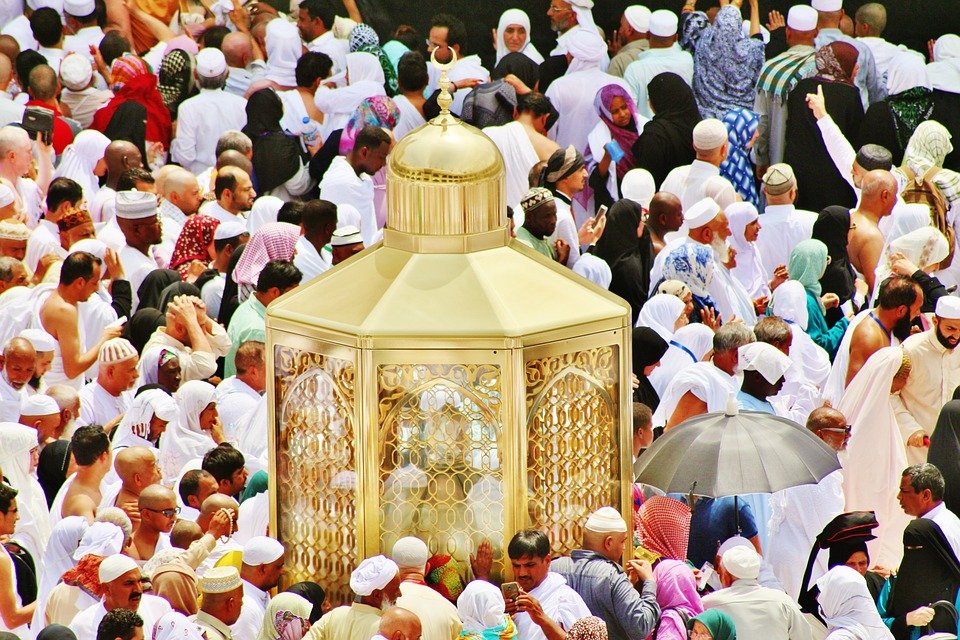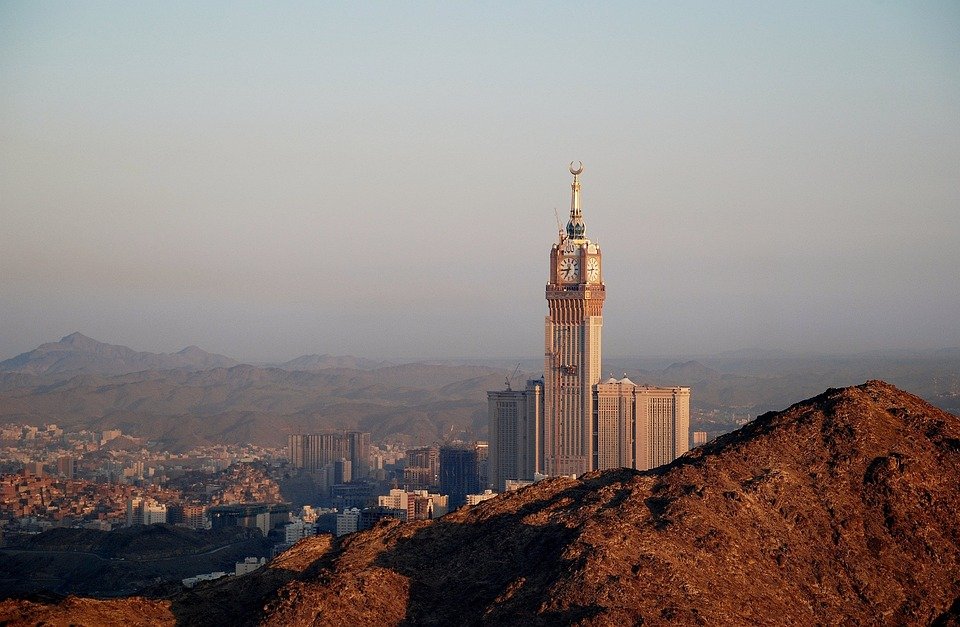You are here to read: Eid ul Adha Connected to Hajj: Significance and Traditions – A Thoughtfully Written Guide Offering Spiritual Wisdom and Travel Advice for Every Pilgrim who is going on holy journey of Hajj or Umrah.
Is Eid ul Adha connected to Hajj? This question often arises among those eager to understand the deeper ties between these significant Islamic observances. In this article, I promise to provide a clear and comprehensive guide to how this connection works. You’ll learn about the relationship between Eid ul Adha and Hajj, its roots in Islamic tradition, and why this connection matters for millions of Muslims worldwide.
The importance of exploring whether Eid ul Adha is connected to Hajj cannot be overstated. I feel that understanding this relationship helps us appreciate the spiritual significance of both occasions. With nearly nine years of experience in the Umrah and Makkah, Madinah travel field through Airlinkhajjandumrah.com, we bring a wealth of knowledge regarding the customs and traditions surrounding these events. In my opinion, this understanding not only enriches our faith but also fosters a greater sense of community among Muslims globally. Let’s delve into the details together!
Eid ul Adha Connected to Hajj: Significance and Traditions
Understanding Eid ul Adha
Eid ul Adha, often called the Festival of Sacrifice, holds deep meaning for millions of Muslims around the globe. This festive occasion occurs annually during the Islamic month of Dhul-Hijjah. It celebrates the willingness of Prophet Ibrahim and his faith in God. Ibrahim’s story is powerful; he was ready to sacrifice his son as a test of devotion. Instead, God provided a ram to be sacrificed. This moment highlights faith and obedience, which are central to Islamic beliefs.
The name "Eid ul Adha" translates to "Festival of Sacrifice." In this light, the act of sacrificing an animal, typically a sheep, goat, or cow, symbolizes trust in God. Families come together to perform this sacred tradition, sharing meat with those less fortunate. It encourages kindness and generosity, reminding us to think of others during festive times. The significance of Eid ul Adha goes beyond just a celebration; it represents a time for reflection, gratitude, and community.
The Link Between Eid ul Adha and Hajj
Eid ul Adha shares a unique bond with Hajj, the pilgrimage to the holy city of Makkah. The timing of Eid ul Adha coincides with the completion of Hajj rituals. Pilgrims, after completing their sacred duties, participate in the festival, making it a moment of celebration and spirituality. This synergy enriches the experience for those participating in Hajj, as their sacrifices during this pilgrimage culminate in the joyous occasion of Eid.
During Hajj, pilgrims perform various rites, including standing at Arafat and symbolically stoning the devil. These actions highlight commitment and purify the soul. When Eid ul Adha arrives, it echoes the lessons learned and the spiritual elevation experienced throughout Hajj. Thus, the festival serves not only as a celebration but also as a reminder of the profound teachings imparted through the Hajj rituals, merging spirituality and joy in one memorable occasion.
Traditions of Eid ul Adha
Celebrating Eid ul Adha involves unique customs that vary across cultures. One of the central traditions is the act of sacrifice. Families come together to choose an animal, often with great care. Once the animal is prepared, they recite prayers, showing respect for the life they are about to take. This act is performed with compassion, reflecting the essence of the occasion. Sharing the meat afterward connects families and communities through generosity.
You're at the middle of this awesome post at AirlinkHajjandUmrah.com through: Eid ul Adha Connected to Hajj: Significance and Traditions. Keep reading, it gets better!
Another beautiful tradition is the communal prayers held in mosques and open fields. People dress in their finest clothes, uniting in worship and gratitude. The spirit of brotherhood fills the air, as everyone gathers to offer thanks. These prayers cultivate a sense of belonging, reinforcing the values of Islam. Children often receive new clothes and gifts, enhancing the festivities. The harmonious blend of tradition and community spirit makes Eid ul Adha a truly special time for everyone involved.
Sharing and Caring During Eid
The significance of sharing during Eid ul Adha cannot be overstated. Families and friends gather to feasts, showcasing both the joy of the occasion and their commitment to helping those in need. Meat from the sacrificed animal is often distributed among relatives, neighbors, and the less fortunate, ensuring that everyone has a share in the celebration. This generous spirit fosters a sense of community and reinforces important values such as compassion and empathy.
In many cultures, charitable acts become even more pronounced during Eid. Various organizations and communities come together to assist those in need. This tradition amplifies the core message of Eid ul Adha: sacrifice for the welfare of others. The act goes beyond merely sharing food. It embodies a commitment to uplifting those around us, making the festival both joyous and meaningful. People often feel a deeper connection to their community, understanding the collective need for compassion and support.
The Spiritual Reflection of Eid
Eid ul Adha serves as a time for spiritual reflection. This occasion encourages individuals to contemplate their faith, values, and purpose in life. Many Muslims take the opportunity to strengthen their relationship with God, engaging in prayers and meditation. Such practices help remind us of the principles that underpin our beliefs and guide our actions.
As families and friends gather to celebrate, they often share stories of faith and resilience. These conversations create bonds that deepen understanding and provide solace amidst life’s challenges. Reflecting on the struggles of Prophet Ibrahim inspires individuals to strive for greater patience and trust in God’s plan. In essence, Eid ul Adha becomes a time to reconnect spiritually while reinforcing the importance of community and support.
Eid ul Adha Around the World
Eid ul Adha is celebrated in diverse ways across the globe. Each culture adds its unique touch to the festivities. In countries like Turkey, colorful festivals fill the streets, while in Indonesia, lively traditional dances entertain crowds. From Africa to Asia and Europe, the essence of Eid remains consistent—celebration, sacrifice, and community.
The varying ways people celebrate offer a fascinating glimpse into the rich fabric of Islamic traditions. Despite geographical differences, the underlying themes of faith, generosity, and unity remain steadfast. Families embrace the occasion, blending customs that honor their heritage and beliefs. This beautiful tapestry of traditions continues to inspire and connect Muslims worldwide, creating an atmosphere of joy and harmony.
Conclusion: The Joy of Eid ul Adha
In conclusion, Eid ul Adha holds a special place in the hearts of Muslims everywhere. It captures the essence of sacrifice, faith, and community, connecting deeply with the pilgrimage of Hajj. Our shared experiences during this time remind us of the values that shape our lives. By embracing these traditions, we not only celebrate but also strengthen the bonds that unite us.
As we partake in the joyous festivities, it’s essential to remember those in need, and the significance of giving. The lessons learned during this time can resonate throughout the year, nurturing kindness and compassion in our everyday lives. Eid ul Adha offers a wonderful opportunity for reflection, celebration, and connection, making it a cherished time for families and communities alike.
That wraps up Eid ul Adha Connected to Hajj: Significance and Traditions. Thanks for sticking with us till here! Share this: Eid ul Adha Connected to Hajj: Significance and Traditions with your friends.
Check our homepage at Air Link Hajj & Umrah for more awesome updates.
Some interesting posts are: 1: Umrah Mubarak, 2: When is Umrah closed 2026?, 3: When does Umrah start after Hajj 2026?
Mushu, an experienced Saudi Arabia traveler and writer, shares insightful tips and spiritual reflections to enhance Hajj and Umrah journeys for fellow pilgrims. He has been to Makkah and Madina from 2016 to 2023 many times and his posts will reflect this.






